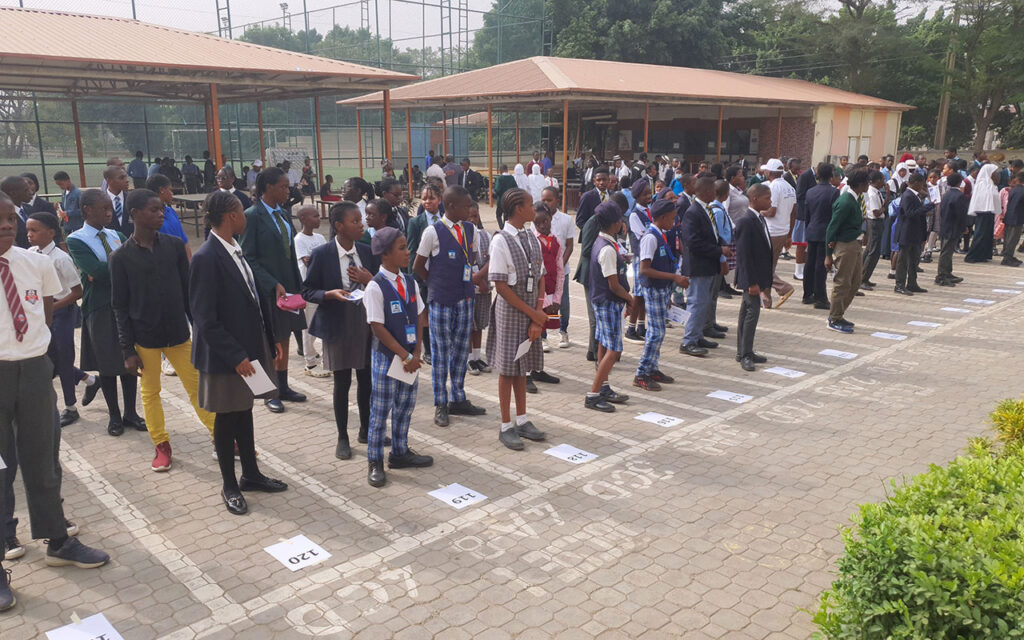 THIS reporting period saw a significant rise, compared to the last month, in the number of successful Boko Haram attacks with at least 10 attacks occurring within the last two weeks. The attacks occurred in Borno, Adamawa, Niger and Abuja, despite the military’s recent several victories. The ability of Boko Haram to launch this number of successful attacks has made some analysts question the candor of the success depicted by the defence PR.
THIS reporting period saw a significant rise, compared to the last month, in the number of successful Boko Haram attacks with at least 10 attacks occurring within the last two weeks. The attacks occurred in Borno, Adamawa, Niger and Abuja, despite the military’s recent several victories. The ability of Boko Haram to launch this number of successful attacks has made some analysts question the candor of the success depicted by the defence PR.
However, locals have indeed testified to some relative sense of calm in recent times and this has correlated with a marked decrease in Boko Haram attacks within their communities, until the recent back to back attacks unleashed by the group.
The insurgent group resurfacing and carrying out a series of attacks and suicide bombings could be a possible indication that they took some time out to regroup, locate fresh supplies, increase the number of IEDs manufactured and re-strategize on how to carry out higher impact attacks. It could also be that the insurgents strategically chose to hold off and carry out these attacks during the Eid and Independence holiday periods knowing that security personnel in the region may have their guards down.
Despite the military’s successes of intercepting suppliers, blocking supply routes, discovering fuel depots and so on, it is clear that there is still a lot to do in identifying the insurgent network, most especially the IED makers. The existence of IED makers who either still have stockpiles of suicide IED vests ready to be deployed, or have been able to quickly and expertly create a vast number of IEDs within a short timeframe is particularly concerning.
The military said that the Chibok girls were still in the general area of the forest but their exact location was not yet known. This statement adds credence to the reality that there are indeed still terrorist havens that are yet to be unearthed, and until they are all discovered and cleared, the risk of an IED maker having continuous access to supplies and logistics will continue to pose a threat.
The insurgent group is also attempting to adapt to the military’s offensive campaign and has evolved from deploying single suicide bombing, to double suicide bombings. This tactic is becoming the new standard. However, over the reporting week, the ante had been upped to four suicide bombers detonating simultaneously.
More concerning about this tactic of four simultaneous detonations is the fact that it was used in different parts of the country —in Maiduguri, twice, and then Abuja. This could be a sign that the insurgents are communicating with each other while planning their attacks. If this is the case, the military intelligence needs to find a way to intercept these communication and be aware of plans for suicide IED attacks and interdict them before they occur.
In addition to exploring recovered IED devices, and identifying the network, the military and intelligence agencies need to start turning to the use of biometrics to counter terrorism by removing the anonymity of insurgents.
How biometrics can help reduce crime in Nigeria
Imagine a driver is stopped on the border of Nassarawa and Abuja. He says his name is James and he has a valid driver’s licence to prove it. James says he’s heading to visit his family in Abuja for the weekend. Before he is allowed to keep going, his fingerprints are captured and checked against the National Identity Database. James is asked to wait and within minutes, members of the police counter-terrorism unit come and take him for further questioning.
It turns out James is actually Usman and his driver’s licence had 3W*“been expertly altered to conceal his real name, but his fingerprints gives him away. Usman’s fingerprints are on the National Database because he was biometrically enrolled after he was apprehended by troops in Borno State for his affiliation with Boko Haram, and was taken to a Bauchi Prison. A prison break occurred six months afterwards and Usman had been roaming the country freely since then. By employing biometric markers, Nigeria’s security agencies can effectively keep criminals off the street by making it harder for them to operate unnoticed.
Biometrics has long been used by advanced nations as a means of identification and authentication. It involves the measurement of an individual’s physiological characteristics such as his body size and shape, or eye, hair and skin color. On a micro-level, it can include fingerprints, retinal details, iris recognition, facial recognition and hand geometry. Most people are familiar with finger print as it is one of the most reliable and widely accepted technologies. A person’s fingerprint is unique and a simple reader can be used to assess it. Most biometric identification technologies require a secondary biometric in order to positively identify an individual, so a combination of fingerprints, digital photographs and iris scans is also widely used.
Harmonising the database
The Nigerian government has chosen to implement biometrics in the country; however, it is yet to be effectively employed against crime. Currently, biometric information in Nigeria is being collected by several different agencies including Immigration services, the police, FIRS, banks, FRSC, population commission, pension commission and so on. While biometrics collection from all these agencies is not a problem, the lack of an integrated database is.
President Buhari gave a mandate to integrate the various biometric databases that exist in the nation, and it is in this interagency database collaboration, communication and compatibility, that biometrics can be effectively used in the fight against terrorism and crime.
Biometrics and terrorism
Quick reaction biometrics systems were employed in the Iraq and Afghanistan wars, in the form of portable handheld identity detection equipment, similar to a large camera connected to a laptop. This portable equipment was used to collect biometric details which were used to enroll or verify individuals who troops came in contact with, on the spot. In addition to the photograph, iris scan, and fingerprint data collected, additional information such as the location and reason for enrolling the individual was also entered.
This practice allowed the military compile a database of people in the area, which made it easier to distinguish residents from criminals or foreign fighters who were trying to disguise as innocent civilians. But most important of all, when an IED device was discovered, the details of the IED maker was entered into the database along with clear instructions of what steps the troops were to take if they came in contact with anyone with matching biometric data.
Emplaced IED attacks are such an elusive offensive strategy that insurgents keep using because of the level of anonymity it affords them. They are able to plant an IED in a crowded area, cause explosions and deaths, and blend in with the rest of the population undetected. It’s about time we started putting identities to the many insidious faces and that is where populating an integrated biometric database can help counter terrorism and rout out terrorists.
Ashiru is the founder of Bulwark Intelligence and is a U.S. Air Force veteran with over 12 years of experience in All-Source Intelligence and counter improvised explosive device (CIED) Analysis. She has been involved in counter-insurgency and counter-terrorism operations in support of Multi-National Forces in Southwest Asia, Middle East and North Africa.
Email: tanwa.ashiru@bulwarkintelligence.com
Website: www.bulwarkintelligence.com
Twitter: @bulwark_intel











